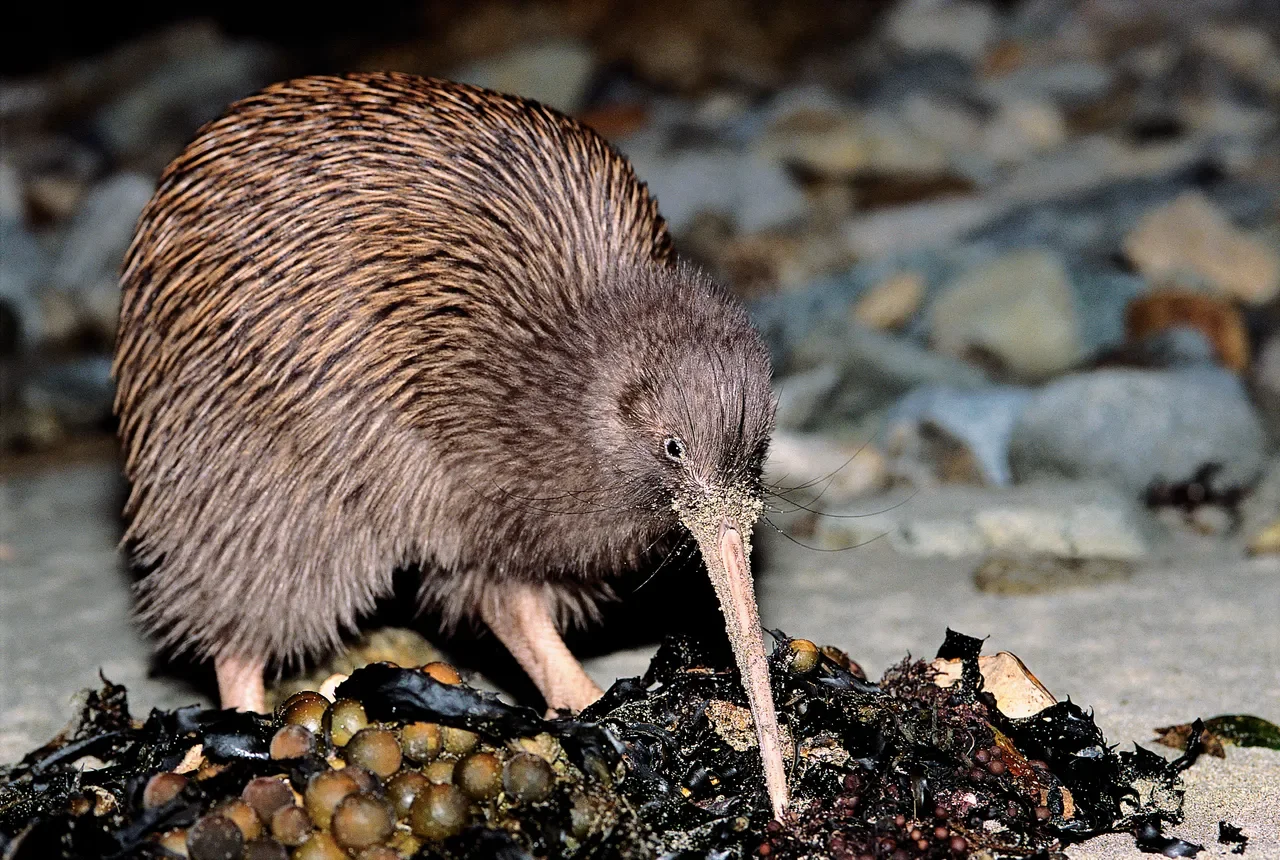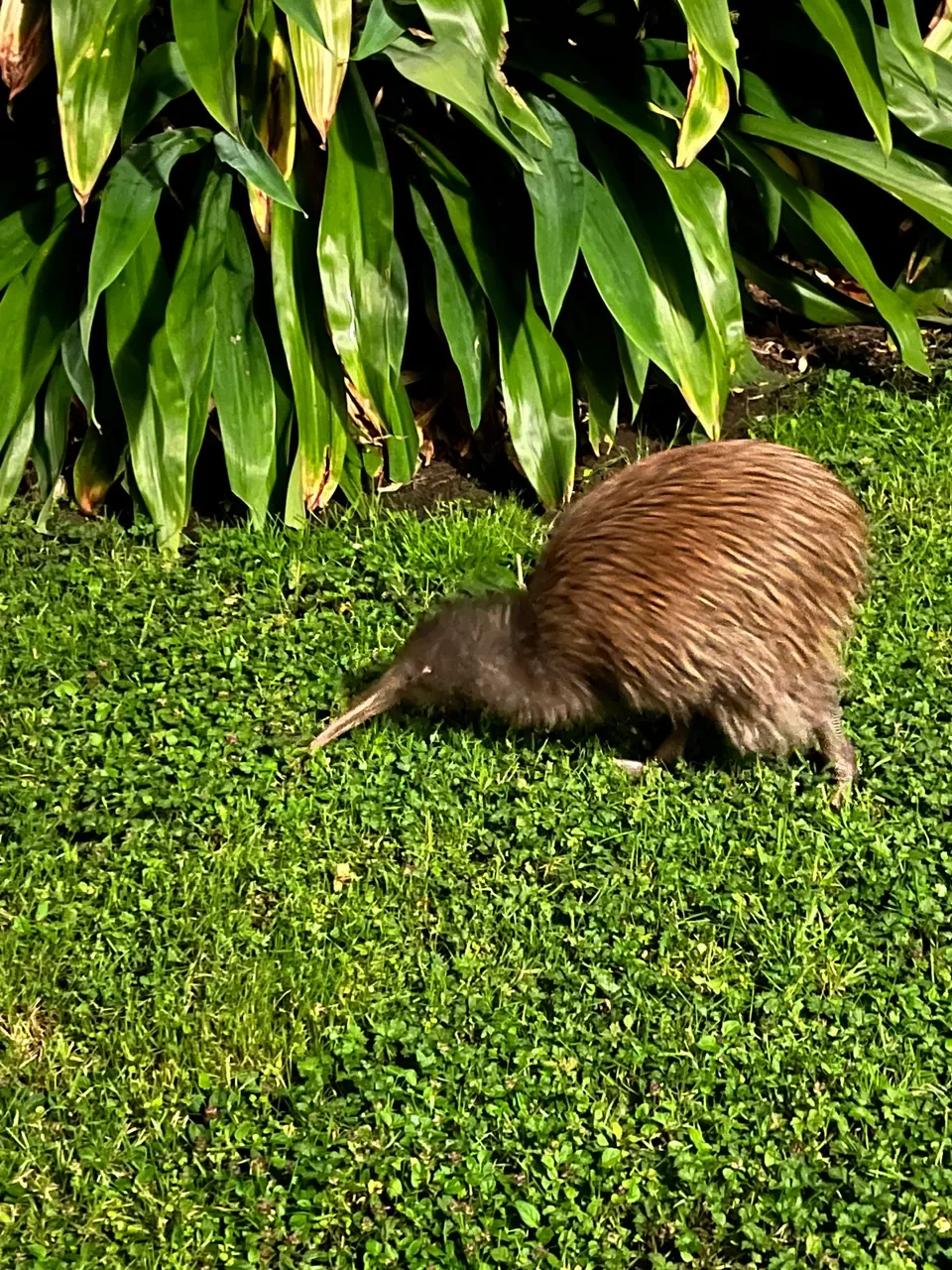Where can I see a kiwi?
Let’s start with the obvious: New Zealand! While it is exciting to see a kiwi anywhere there is really nothing that beats the thrill of the ultimate long-beaked bird encounter deep in the forest of Stewart Island. But, let’s start with the ‘tamer’ options first: the sanctuaries and wildlife centers.
Stewart Island Tokoeka, photo credit: Great South
National Kiwi Hatchery (Rotorua): This is the largest and most successful kiwi hatchery in the world (and of course it is in NZ!). You can observe kiwi in a nocturnal house and, during hatching season (September to March) see kiwi eggs and chicks up close. There are also behind the scenes tours (bookings required).
Otorohanga Kiwi House and Native Bird Park (Waikato): Brimming with birds: kiwi, kaka, kea, kakariki, along with our own dinosaur, the tuatara, and longfin eels. The center is on the tourist path (close to Waitomo caves) and provides a reliable viewing experience in a nocturnal house where the birds are active.
Pūkaha National Wildlife Centre (Wairarapa): This center focuses on the conservation and breeding of endangered birds. Visitors can see kiwis in specially designed enclosures and can also take guided night tours to see them in the forest.
Willowbank Wildlife Reserve (Christchurch): This reserve offers guaranteed kiwi viewing in a natural environment without glass barriers.
West Coast Wildlife Centre (Franz Josef): This center is dedicated to the conservation of two of the rarest kiwi species, the Rowi and Haast Tokoeka. It offers a 48-hour pass, allowing you to return and an optional VIP tour for a behind-the-scenes look at their incubation program.
Zealandia (Wellington): This urban eco-sanctuary is fully fenced and home to many native species, including kiwi. While sightings are not guaranteed, a guided night tour provides a good chance to see one in a "wild" setting close to a major city.
Kiwi Park (Queenstown): A wildlife centre in the heart of Queenstown. The park has a number of native species (including kiwi) and is open every day.
In the wild.
It is not an understatement to say that your first encounter with a kiwi, in the wild, will change you. We are yet to meet someone who was unmoved by crossing the path of a kiwi and some of the best viewing places are here, on Rakiura Stewart Island.
While the kiwi is generally considered a nocturnal bird, the Rakiura Tokoeka or Stewart Island brown kiwi, can often be seen feeding during the day (particularly at dusk or dawn). The island has a large number of kiwi (estimated at around 20,000) which makes the chances of seeing a bird quite good – given the right circumstances.
We have recommendations for going out kiwi spotting and thoroughly recommend taking a guided tour (Ulvas Guided Walks are excellent) as the locals really do know the good ‘spots’. It is also possible, but not as likely, that you may encounter a kiwi during the day on Ulva Island – if you are lucky enough to encounter a bird, stay still and enjoy watching it’s behaviour until it has waddled back into the undergrowth.
Further north there are places where you can also potentially see birds in the wild. For example, Kapiti Island Nature Reserve or Trounson Kauri Park and in these locations you will need to organize a guided night walk.
(Photo credit: Great South)

